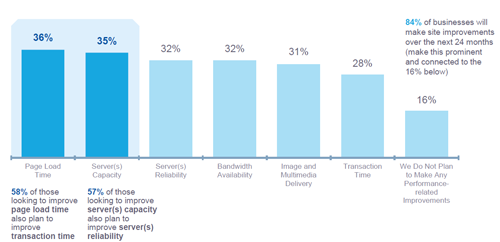The Impact of 5 Seconds in Retail

Some pretty old statistics are frequently quoted about how long a website visitor is willing to wait for a Web page to load and what percentage of users a site will lose for each second they wait.
For example, Akamai reported 10 years ago that sites could lose up to 33 percent of their visitors if the page takes more than 4 seconds to load - fresher data just didn't really exist until now.
Cybersecurity company Imperva recently published a new ecommerce study and survey comparing the views of shoppers and website operators. Imperva found that 62 percent of online shoppers will wait 5 seconds or less for a page to load before they leave. Website operators know this to be true, believing improved page load times will result in an increase in retention and brand loyalty (57 percent) and customer satisfaction (57 percent).
In the next 24 months, 84 percent of website operators plan to make improvements to their website with page load time and server capacity topping their to-do list (see image - click to zoom).
The road to digital heaven is, of course, paid with good intentions though. While the Imperva study indicates operators' plans to increase page load time, they may not understand how to actually reach that goal. For instance, of website operators surveyed, 43 percent say they are generally unfamiliar with load balancing tools. Similarly, 53 percent are relatively unfamiliar with a content delivery network (CDN).
For those who are familiar, many just can't justify the costs of a load balancer or think there is no need (despite thinking decreased page load times will increase customer retention and satisfaction).
 Request Website Magazine's Free Weekly Newsletters
Request Website Magazine's Free Weekly Newsletters









